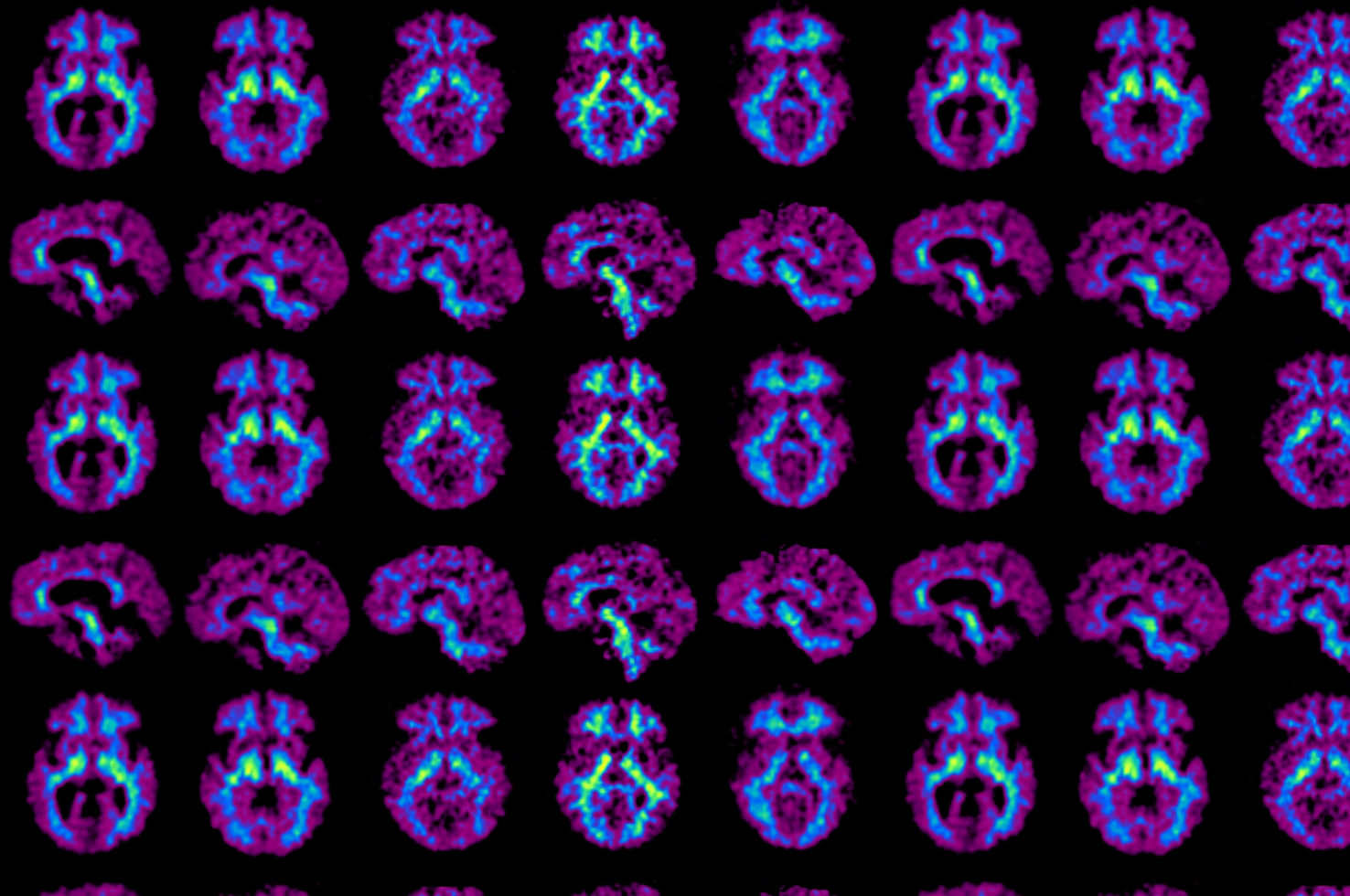Accumulation of Amyloid Beta in Down Syndrome and Early-onset Alzheimer’s Follows a Different Path Than Late-onset Buildup

The brains of people with early-onset Alzheimer’s and Down syndrome share a distinct pattern of amyloid buildup that is not seen in late-onset Alzheimer’s disease. Future studies on the origin of this unique pattern could reveal important mechanisms of amyloid beta accumulation and possibly targets for early intervention.
People with early-onset Alzheimer's disease often develop symptoms of cognitive decline in their 40’s or 50’s, unlike the more common late-onset Alzheimer’s that affects much older people. Early-onset Alzheimer’s is typically caused by genetic changes that affect the production of amyloid beta, the protein that forms clumps in the brain called plaques. These plaques disrupt brain function and are one of the hallmarks of the disease. In contrast, late-onset Alzheimer’s, which is much more common, does not have a strong genetic basis and is instead thought to be caused by diminished purging of amyloid beta due to aging.
While early-onset Alzheimer’s and late onset Alzheimer’s share symptoms of memory loss, confusion, and other types of cognitive decline, the brains of people who will develop these conditions look different before cognitive impairment becomes apparent. In people with early-onset Alzheimer’s, amyloid beta tends to accumulate in a central region of the brain called the striatum before cognitive symptoms appear. This pattern is not observed in pre-symptomatic, late-onset Alzheimer’s. The basis for these differences in early amyloid beta accumulation is unclear. One way to explore the underlying mechanisms is to determine if another genetic change that alters amyloid beta production also causes the distinct pattern of accumulation.
Down syndrome is a genetic condition with a variety of effects including over-production of amyloid beta. Consequently, many people with Down syndrome will subsequently develop Alzheimer’s disease. To explore whether people with Down syndrome share the pattern of amyloid accumulation in the striatum seen in early-onset Alzheimer’s, researchers in the Department of Psychiatry at the University of Pittsburgh School of Medicine performed live whole brain imaging of people with Down syndrome, people with early-onset Alzheimer’s, and people with late-onset Alzheimer’s.
Ann Cohen, PhD, Assistant Professor of Psychiatry, collaborated with Department colleagues William Klunk, MD, PhD, Distinguished Professor of Psychiatry and Neurology and Levidow-Pittsburgh Foundation Chair in Alzheimer's Disease and Dementia Disorders, and Benjamin Handen, PhD, Professor of Psychiatry and Pediatrics, Psychology and Instruction and Learning (Education) and others to examine participant’s brains with a type of brain imaging called Pittsburgh compound B positron-emission tomography, or PiB-PET. This technique produces images that highlight amyloid beta plaques in the brain.
The team found that like people with early-onset Alzheimer’s disease, the brains of people with Down syndrome had accumulations of plaques in the striatum. The team also confirmed that older people with pre-symptomatic late-onset Alzheimer’s did not have this distinct pattern.
The findings add to a growing body of knowledge about changes in the brain that can be detected before the cognitive symptoms of Alzheimer’s emerge. The authors speculate that a better understanding of the cause of this pre-symptomatic accumulation in those with early-onset Alzheimer’s and Down syndrome could yield important clues about the mechanisms of amyloid beta accumulation that lead to plaques. The pattern may eventually serve as biomarker or indicator of response to experimental treatments at an early stage of the course of the disease.
Early striatal amyloid deposition distinguishes Down syndrome and autosomal dominant Alzheimer's disease from late-onset amyloid deposition
Cohen AD, McDade E, Christian B, Price J, Mathis C, Klunk W, Handen BL
Alzheimer’s Dement, 2018, 14(6):743-750
